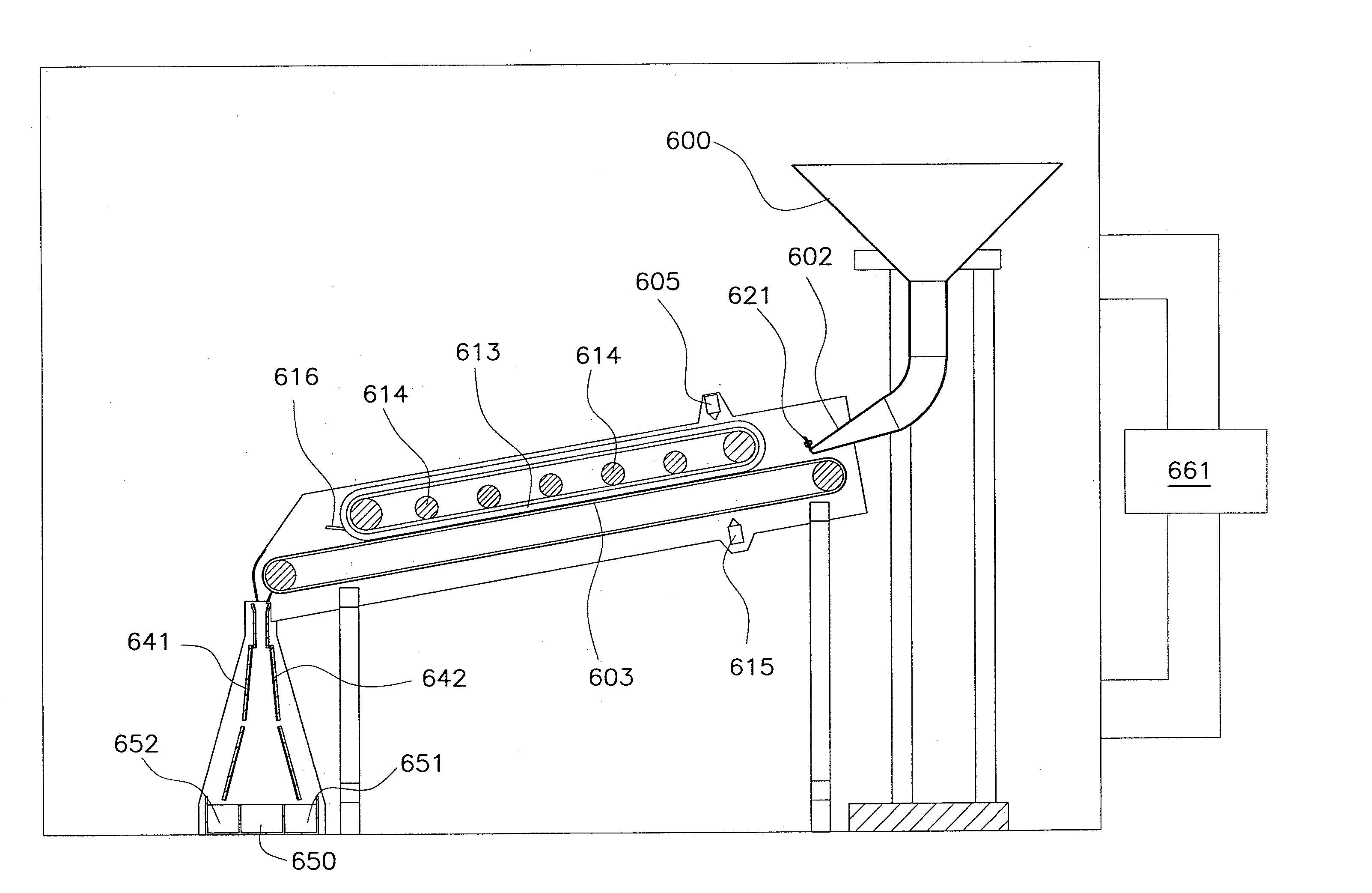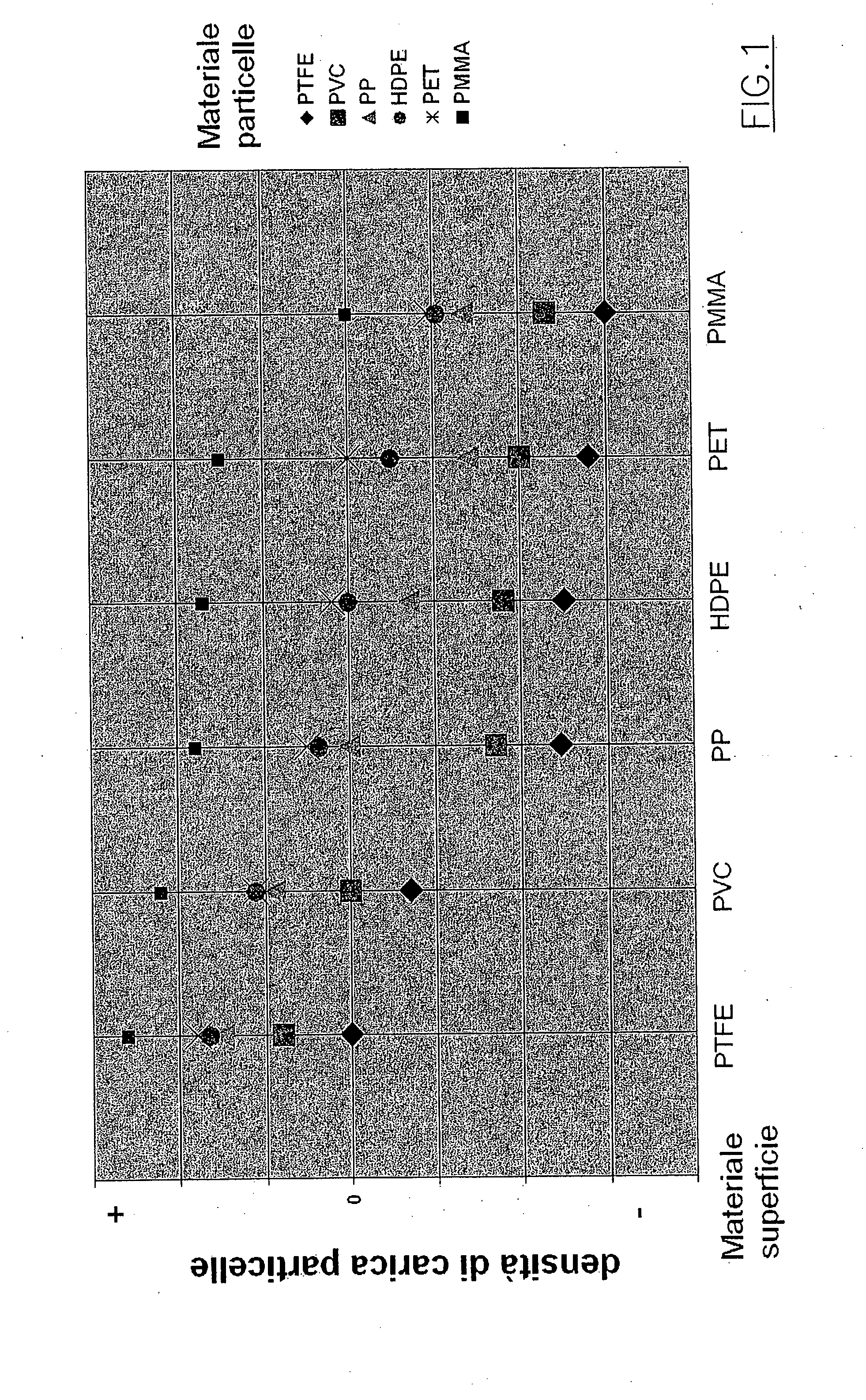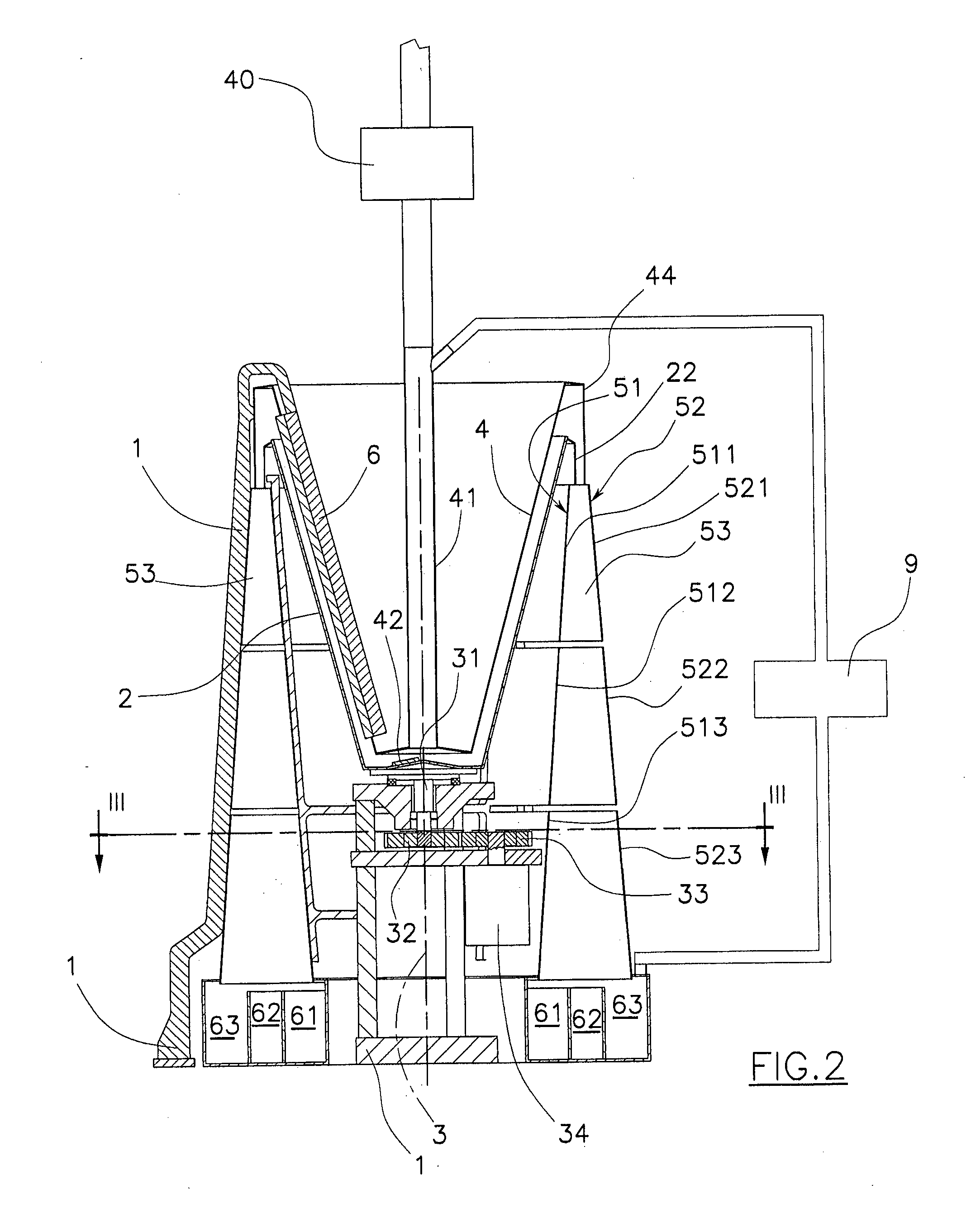Method and a device for separating particles of a determined synthetic material from particles of different synthetic materials
a technology of synthetic materials and separating devices, which is applied in the direction of electrostatic separation, solid separation, chemistry apparatus and processes, etc., can solve the problems of insufficient homogeneity of reciprocal dragging between particles, inability to separate two different materials from one another, and a certain number of prior art problems, so as to achieve the effect of maximising the electrical field
- Summary
- Abstract
- Description
- Claims
- Application Information
AI Technical Summary
Benefits of technology
Problems solved by technology
Method used
Image
Examples
example 1
Relating to the Device of FIG. 8
[0137]A granular mass is placed in the hopper 500, comprising granules in unknown proportions, singly constituted by one of the following materials: PMMA, PTFE, PET, PVC.
[0138]With the mass of PVC granules to be separated, the rubbing surface constituted by the base 503 of the chute is realised or clad with PVC.
[0139]The PVC granules do not therefore acquire any electrical charge by rubbing against the chute.
[0140]Three piles are obtained downstream of the electrical field, respectively a central pile 550 into which only the PVC granules fall, a pile 55 underlying the negative pole, into which the PMMA and PET granules fall, and a pile 552 underlying the positive pole into which the PTFE granules fall.
example 2
Relating to the Device of FIGS. 5 to 7
[0141]The mass of granules in the hopper 100 comprises respectively PVC, PP and PTFE granules.
[0142]With the mass of PVC granules to be separated, the internal surface of the tube 300 is clad with PVC and a pile 501 of granules not deviated by the electrical field is obtained, constituted entirely of PVC.
PUM
 Login to View More
Login to View More Abstract
Description
Claims
Application Information
 Login to View More
Login to View More - R&D
- Intellectual Property
- Life Sciences
- Materials
- Tech Scout
- Unparalleled Data Quality
- Higher Quality Content
- 60% Fewer Hallucinations
Browse by: Latest US Patents, China's latest patents, Technical Efficacy Thesaurus, Application Domain, Technology Topic, Popular Technical Reports.
© 2025 PatSnap. All rights reserved.Legal|Privacy policy|Modern Slavery Act Transparency Statement|Sitemap|About US| Contact US: help@patsnap.com



